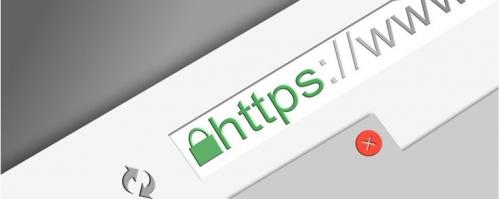When building an online site, security is one of the main things to consider. The risk of being attacked by hackers is something that weighs heavily on the minds of everyone who is getting ready to launch a new service of this type.
The Council of Economic Advisers suggests that malicious cybercrime could have lost the U.S. economy up to $109 billion in 2016. However, there are some reasonably simple tips that you can follow in order to minimize this risk. The following are some of the types of website protection that you can’t afford to ignore.

Put in a Strong Security Protocol
There are some common pieces of advice that are useful for anyone who is starting up a new website. A good starting point is with a solid SSL security protocol. This approach gives a secure, encrypted connection and lets users see that this is the case, with the addition of a padlock to the address bar.
The HTTPS protocol is another type of secure, encrypted connection that is available. In this case, the browser’s address bar shows the level of protection with the use of an address that begins with “HTTPS”.
Use Good Passwords
The use of good passwords is crucial to the safety of your online business. This applies to the administrator login that you use as well as to the passwords that customers are prompted to use. Strong passwords make life much more difficult for hackers.
It is worth remembering that hacked passwords are said to cause over 80% of data breaches, according to the 2017 Verizon Data Breach Investigations Report. This is an increase on previous years’ figures and seems to suggest that users are becoming more lax over the strength of their passwords.
Update to the Current Versions of All Software
The software that a site runs on needs to be constantly brought up to date. It is especially crucial when the software has been updated due to previous security issues. Whether it is a content management system, ecommerce software or something else, you need to make sure that nothing slips through the net.
Fortinet.com’s Q2 2017 Global Threat Landscape report showed that nine out of 10 companies suffered attacks on vulnerability issues that had been around for at least three years. Six out of ten were also attacked on devices that had patches available for more than a decade.

Some Sites That Use These Techniques
These ways of keeping hackers at bay are vital on just about any site now. As you can imagine, the biggest and most-visited websites are among the best-protected places on the internet. Top-notch security is especially important on sites that collect personal information or process payments.
A good example of where this matters most is on gaming sites where members play with real money. IT uses the recommended HTTPS protocol and has a secure login process with an additional CAPTCHA system in place.
The likes of Facebook and Amazon spend a fortune on keeping their visitors safe from hackers for a very good reason. A successful attack on these sites would potentially be a major disaster for millions of users and could prove fatal to their own reputation.
Making a website more secure shouldn’t be a major hassle these days. With the tools and information available online, anyone can take the necessary steps to protect their business and their visitors from malicious attacks.

